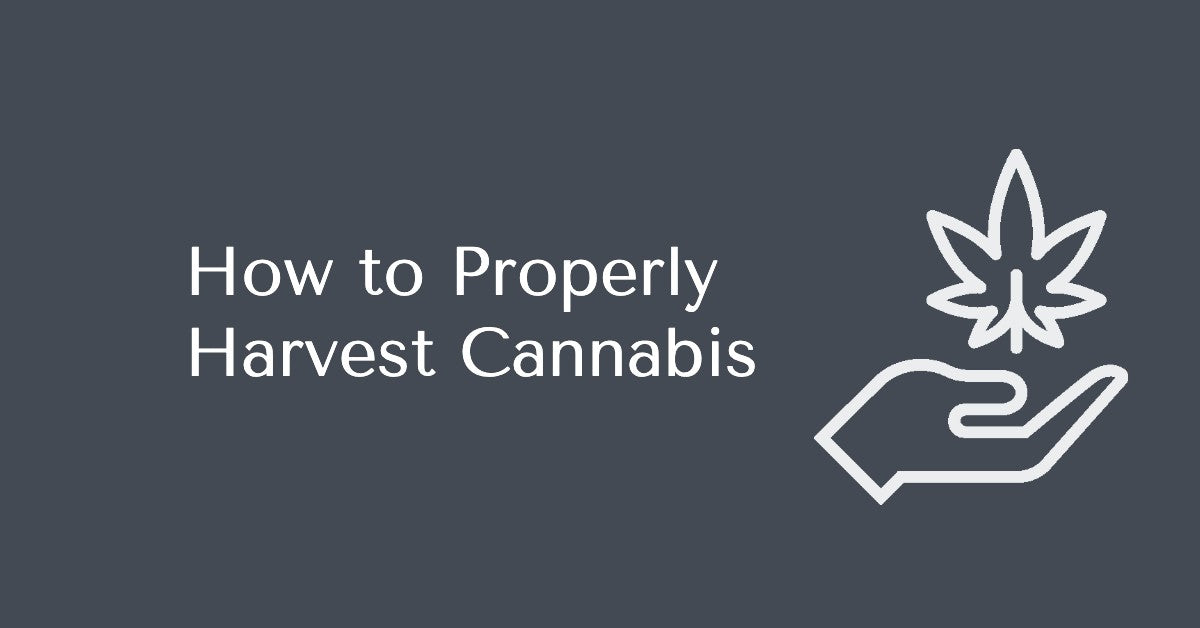
There is more to harvesting cannabis than cutting stalks and chucking them to your trimmer or drying racks. Since cannabis is quite sensitive, given all the flavors you want to taste later, you need to exert extra levels of diligence in going from harvest to drying. After all, you do not want to waste the months you spent in cultivating your favorite strains. So how do you process cannabis properly?
Knowing When Your Strain Is Ready
By now, you know that cannabis is ready for harvesting when the trichomes turn amber in color, and they start with a translucent shade at formation. But do you know when in the cycle does trichome maturity begin?
The first step to properly harvesting cannabis is knowing the lifecycle of your strain. The purpose of knowing these phases in the growth of cannabis is to get a good idea of when your cannabis will be ready for harvest.
One of the crucial indicators in the growth cycle is when trichomes appear and when it matures. You see, when trichomes appear, it means your cannabis is at the penultimate stage towards maturity.

That means planning the adjustments, and actions towards D-day of picking your produce for processing. Also, different strains have their respective schedule before flowering.
If you are growing an Indica strain, you need around eight (8) weeks after flowering before you can start cutting your cannabis plants. Meanwhile, Sativa and Autoflower strains need around ten (10) weeks after flowering before you can harvest.
Flushing and Trimming
Concerning knowing when to harvest, you should be able to have a clear idea of when your cannabis will reach full maturity. Because weeks before D-day, you will need to flush off the fertilizers and pesticides in your plants. You would not want to ingest them, even if you used organic solutions.
The idea of flushing is to remove all excess solutions and let the cannabis survive using its stored nutrients until it is time to harvest. To flush the chemicals from your plants, you need to flood your grow medium with clean water. Give the water a few minutes to break down these nutrients, then add more water to flush it out.
For the next days until the harvest proper, you will only induce water to these plants. And on the day before you collect your products, give your plants one more flushing.
You may also want to begin pruning excess leaves before the culmination of your harvest. Some growers begin pruning at the start of senescence since larger fan leaves begin wilting at this stage. Although this is an optional step, you should consider doing so to make post-harvesting easier.
Have the Right Tools
Your cannabis may be on its way to becoming a flavorful product, but do you have the right tools to take on the job?
You don’t need any fancy tools actually to harvest cannabis properly.
All you need are:
- Pruning shears to cut the branches of the plant, and fan leaves
- Serrated blade, for cutting the main stem
- Powder-free latex gloves to help you handle the cannabis
- Labels, if you are harvesting different strains
- Trays, to hold your harvests
Aside from these tools, make sure your drying area is ready. Your drying area should have little to no light penetrating, with a temperature and humidity control. Also, you need to have a line and pins, so you can hang to dry. If you are going for wet
trimming before drying, replace the line and pins with drying racks.
The Right Technique
Now you don’t just go on a cutting spree when D-day arrives. Since cannabis is delicate, you ought to treat it with the utmost care to preserve the trichomes and keep buds in place.
So how do you go about cutting your cannabis during harvest?
Always cut from top to bottom.
Especially in cases where your plants have grown thick and tall, there’s a good chance you will still have buds with trichomes that have not matured. You can find the buds with delayed maturity below the plant, often covered from sunlight. That is why you need to start from the top, inspecting the trichomes, so you know where to begin.
Once you find the branch with matured trichomes, hold it gently, then cut at the base. If you find buds that have trichomes that have yet to mature, leave them as is, and wait for their maturity.
Put your harvest in clean trays or containers for proper handling. Avoid leaving them on the ground, as they might pick up dirt, due to the sticky nature of trichomes. Move on to the next branch until you clear all branches.
Once you clear all branches, you can cut off the main stem, using the serrated blade.
Where to Go Next
If you are going for a dry trim, you should immediately move the cannabis branches to your drying area. If you plan to trim them at once, move your harvest immediately to your
bucker, then the
trimmer.
If you go for wet trims, don’t forget to gather your trims, as you can use them for other purposes like infused oils.
Should You Try Stem Splitting?
Some growers split the stem of their cannabis to increase the potency and even boost the production of buds.
Unfortunately, that has yet to be proven.
Although some claim there is truth to stem splitting, you might want to hold off, especially if you lack experience in growing cannabis. Also, stem splitting is dependent from one strain to another. You might not get similar results as others may have.
Moving Forward
Harvesting cannabis properly is not at all hard. The key here is to treat harvesting, not from when you start chopping branches, but even steps leading towards the last day. While you need to be extra meticulous in the last stages of growth, the trade-off for this level of diligence will be beneficial for your harvest. You only want to produce the most potent, and the best flavor, and to do so requires walking the extra mile for the best results.




